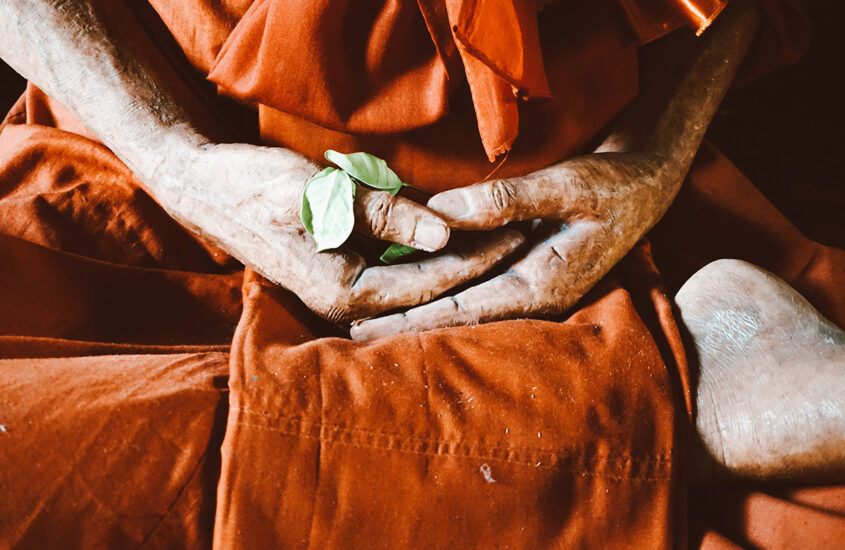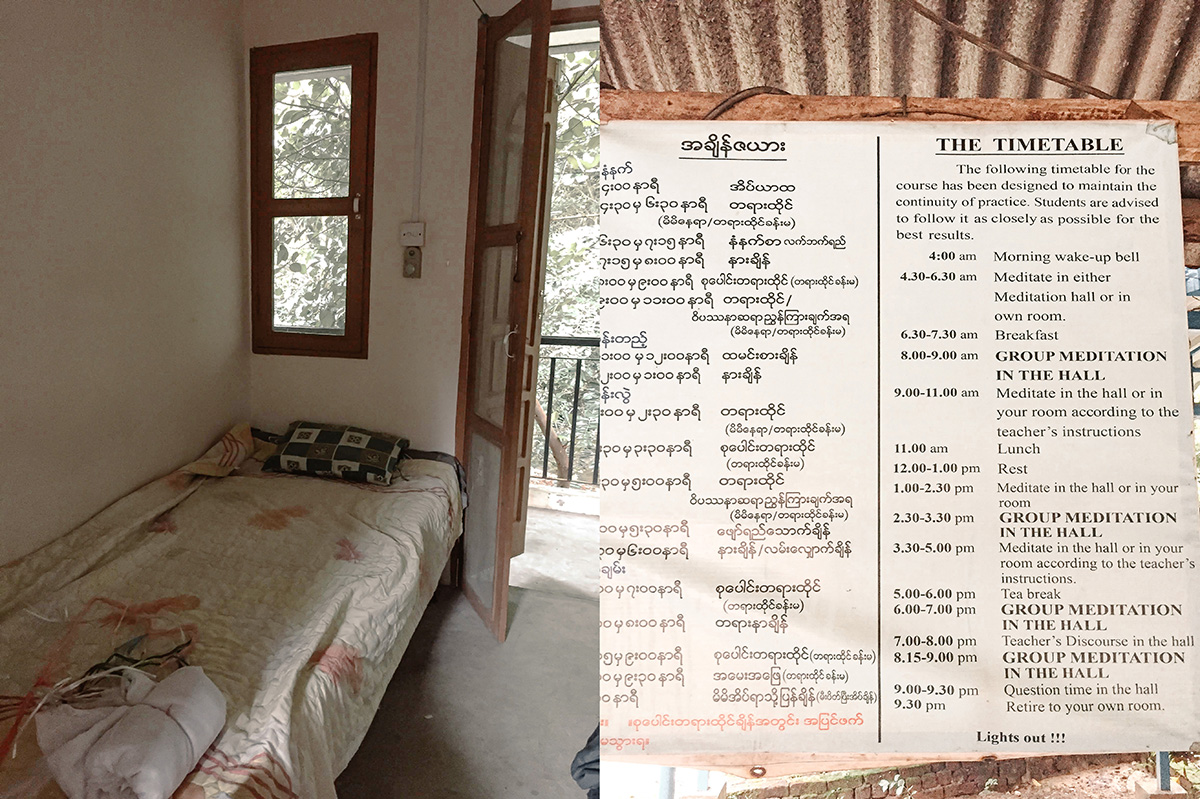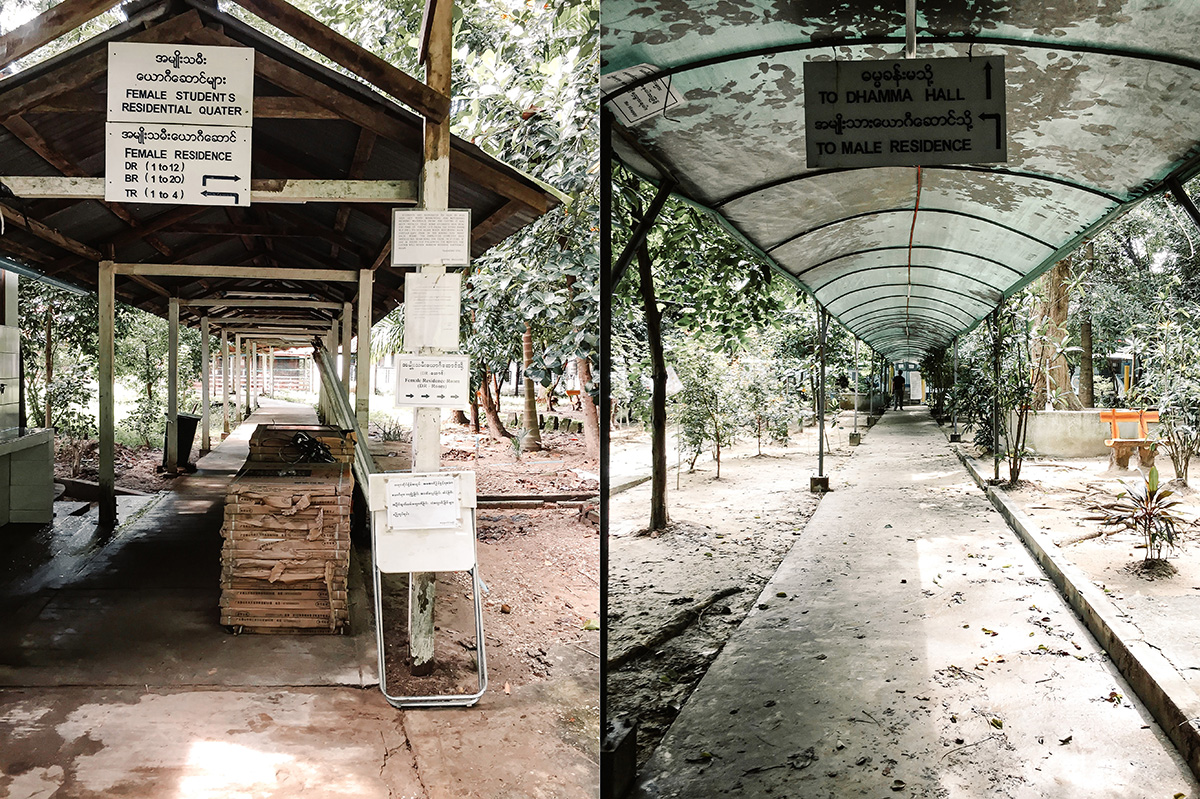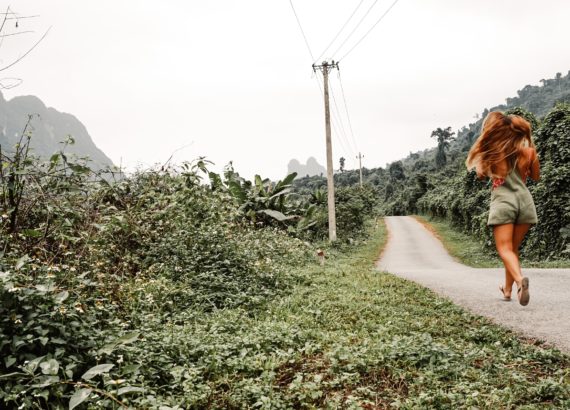Vipassana retreat or how to survive 10 days in silence


The bell rings at 4am and I’m getting ready for my first Vipassana retreat day.
It is 4:30 am and I´m in the Meditation Hall and we meditate until 6.30. The bell rings. Breakfast and free time until 8:00 am. The bell rings . Meditation until 9:00 am. The bell rings. 5 minutes break. The bell rings. This is followed by 15 minutes of instruction and meditation until 11 am. The bell rings. Lunch time until 1 pm. The bell rings. Meditation until 02:15pm. The bell rings. 15 minutes break. The bell rings. Meditation until 03:30pm. The bell rings. 5 minute break. The bell rings. This is followed by 15 minutes of instruction and meditation until 05:00pm. The bell rings. Tea time until 6:00pm. The bell rings. Meditation until 7:00pm. The bell rings. Teacher’s speech (audio) until 8:30pm followed by meditation until 9:0 pm. The bell rings.
I head to my dorm, half shocked by the day I just had. My body aches like it was hit by a truck. I established a love-hate relationship with a bell. And I’m in the first of 10 equal days. I lie down on the hardest bed I’ve ever slept, I look at the ceiling and think:
How did I end up here? I am basically in a meditation army.
A FEW WEEKS BEFORE
In the middle of my trip to Asia I decided that I wanted to do a meditation retreat, to once and for all learn how to meditate, connect with myself, live with the monks and experience a little bit of “Eat. Pray. Love” of my life. Why not?
Meanwhile in Koh Tao – Thailand a friend told me about the Vipassana retreat he had done in Nepal. He told me about the 10 days in silence, all the learning he acquired and how this retreat was a little more restricted than the others.
Restricted is not bad, I thought. And without doing any more research on the subject. Without any meditation practice. I decided that I would do the Vipassana retreat on my way through Yangon, Myanmar.
That’s how I ended up there.
No cell phone. No speaking. No touching. No looking in the eyes. No reading. No writing. No monks (there were one or two who were actually taking the course with me which scared me even more).
And that’s how I ended up there. Just me, the noble silence (silence of the body, word and mind), almost 11 hours of daily meditation and nine more days ahead. GREAT Maria! This time you did your best! (feel the irony here 🙂 )


WHAT VIPASSANA IS?
Vipassana means “seeing things as they really are”. It is a meditation that believes the process of self-purification through self-observation.
This ancient Indian meditation technique was taught by Gautama Buddha himself, however, currently its master is Professor Goenka (1924-2013), born in India and raised in Myanmar where he learned the technique from the monks who kept it in its purer way.
VIPASSANA AND MINDFULNESS – THE DIFFERENCE
Vipassana differs from Mindfulness or Samatha meditation in that the last one focuses on the practice of mindfulness, using breathing or a mantra as objects of concetration. It is a meditation in which the aim is to achieve tranquility. However, Vipassana meditation focuses on non-reaction, being a meditation in which the aim is to achieve enlightenment.
Vipassana meditation consists in long sequences of scanning the body in a specific order. In which we are instructed to pay attention to all the sensations that arise in this process without allowing ourselves to react to them. Not creating an avidity for the good sensations or rejection for the bad sensations. Since we don’t allow ourselves to react to what the body feels, we are teaching our body and mind to create a barrier against the blind reaction.
For example:
If you are scanning the sensations of your shoulders and at the same time you feel a terribly numb foot that hurts, you immediately move your mind’s focus to your shoulders. Totally ignoring the part of your mind that desperately asks you to move your foot. Saying to yourself that the pain is temporary, just like everything in life. There is no attachment. There is no automatic reaction. They are just sensations that come and go.
And voilà we have Vipassana explained in a very simple way.
MY TESTIMONY
To my surprise, the most difficult part was not waking up at 4am or not eating anything after noon, or even being unable to speak, as incredible as it may seem. For me it was hard the lack of contact, the lack of not seeing life happening. But more than anything, the hardest part it was the meditation.
DAYS 1, 2 AND 3
During the first three days we were presented to Samatha meditation that would prepare us for the practice of Vipassana. This preparation consisted of focusing our attention on the triangle that corresponds to the area between the upper lip and the nostrils.
The orientation was that we should pay attention to our breathing and the flow of air through the nostrils. And eventually we would be aware of a sensation. This sensation could be something very light, like a vibration or numbness. And our goal was just to focus on that sensation.
It was 3 days where everything I had to do with my life was spent 10 hours a day trying to feel the subtle sensations in my nostrils. 10 hours a day. Let me reinforce: 10 HOURS!
Meanwhile, in the middle of these millions of hours of meditation, my back, my butt, my legs, and everything in my body started to scream in pain. The pain was constant no matter how many pillows I placed under my body. And believe me, at some point I was the pillow queen of the meditation Hall.
The truth is for someone who has never meditated, this was the closest version of hell I have ever experienced.
In addition to this was the total lack of control of my mind.
I closed my eyes.
I took a deep breath.
I relaxed.
And not a minute later the party started.
My mind was full of everything you can imagine. It began a battle between past and future, about stories invented to pass the time and to avoid thinking about the pain, about childhood memories forgotten to be reborn from the ashes. It was like have the whole world inside my mind when the goal was totally the opposite.
These were probably the three most difficult days I had lived so far.
However, time went by and with it the whirlwind of daily thoughts, as well as my body looked to accept the pain as a constant. I would survive the Vipassana retreat.


THE REMAINING DAYS
On the fourth day we were introduced to Vipassana meditation.
It was, therefore, with great joy that I said goodbye to the relationship I had created with my nostrils, to start doing the same with all the pieces of my body. At least now I had a world of one meter and half to discover sensations, much better than the three centimeters around my nose!
However, if on the one hand I started to feel progress to calm my mind and become aware of the vibrations existing in ALL parts of the body (even at the tip of the ear) on the other, we were introduced to what is called “strong determination sitting” or, as I like to call it “the most physically painful thing I’ve ever done in my life”.
Strong determination meditation consists of practicing Vipassana without moving your body under any circumstances for an hour. This strand was performed three times a day and, believe me, an hour is a long time, especially when the remaining hours are spent in the same position.
However, it was during this hour of “strong determination sitting” that I really started to understand Vipassana. The learning behind the practice.
BEHIND THE PRACTICE
After a while with this practice I became aware of the sensations existing in all parts of my body, from the most subtle to the grossest. I felt the free flow of energy and vibrations that we are made of, but most important of all, I experienced and understood impermanence.
The pain increased and decreased progressively. While in a scan I could feel unbearable pain in some part of the body, in the next scan I didn´t feel pain anywhere, or instead, I felt it in a new part of my body.
It is true. The pain is only temporary, I thought.
The sensations I felt in my body were never repeated in the same way. One scan was never the same as another. Everything is transformed. Everything changes. All the time.
I started to connect what I learned in the teacher’s speeches with the meditation process I experienced each day.
Goenka taught us that the path to a life without suffering was the understanding that pain, sadness and suffering are a natural part of life, as well as joy and pleasure. However, all of these sensations are temporary.
So if we stop fighting things we don’t like and stop trying desperately to grab things we like, life becomes more peaceful.
The feelings will come, but having a sense of their impermanence, we must observe them without attachment or aversion, because everything changes. Everything changes or disappears and that is Okay because new things will arise in that place.
Annica means impermanence.
What a simple idea, so obvious and so true. That was it. I had my insight. The beginning of my awakening.
I have suffered for many things in life. Most of it never existed.
The learning made me more serene, at least my thoughts of escape had dissipated and, although I continued to feel bored and in pain due to long hours of meditation, I began to find a greater meaning in my experience. However, I admit that I kept counting the days until the end.


WHEN YOU THINK YOU WOULD HAVE NO MORE SURPRISES
When I thought there would be no more surprises, behold, on the seventh or eighth day, we started to meditate 3 hours a day in small “cells”.
Individual cells of 1m x 1.50m. With some strange objects hanging on the walls.
Obviously, any attempt at meditation gave way to constant thinking of how bizarre it was that situation, as well as a small enthusiasm to get out of the routine. However, the initial enthusiasm was quickly replaced by boredom and longing for the Hall, at least there were other people to observe during my strategic pauses in meditation.
I would like to say that I got to the point where I liked to meditate in the cell but that never happened, it was asking too much of a girl who had just given her first steps into the meditation world.
From the cell, I only learned how I can endure the boredom taken to the extreme.
THE LAST DAY
It was such happiness!!!
From 9:00 am we were allowed to talk to each other. This transition is supposed to help us get back to the real world.
It was strange to be back to normal. Gradually, what was once a solemn silence turned into voices, sharing, and laughter.
For me, what I found most interesting was knowing other people’s experiences. Since over the course of those ten days I had created stories in my head, about how the people “closest” to me were experiencing it.
It turned out that whoever I thought was completely focused was the same or worse than me. And whoever I thought was fed up was actually taking meditation to another level.
I found it funny to see how our minds create realities that don’t exist and that becomes our reality. All illusion.
Also, there was a man who, when I was at my meditation stops and dedicated myself to observing others in the hall, unintentionally we crossed our eyes a few times. I always thought, “this one must be so bored as me”. On the last day, in the distance, he smiled at me and raised his hand. Yep. More than being on the “same wave”, we created a connection with no words.
I was happy to have endured the 10 days. To have broken many of my limits, for everything I had learned and mainly, to know that this was the beginning of a path that I wanted to follow. Not the part of going an hour without moving my body, but to understand more about life, the mind, and about what is real.
When I left there I said that it was totally worth the experience but that I would never repeat it again. Today, after 3 years, I think that I will repeat it. I really want to live it all with all the knowledge I have now.
IF I ADVISE YOU TO GO?
ABSOLUTELY!
You may think I’m crazy. But I believe that taking us to extremes makes us have new perceptions about who we are. Nobody evolves sitting on the sofa in the living room or doing exactly the same things they always did.
Your experience will be different from mine. Maybe better or maybe worse. Maybe easier or more difficult. But it will be YOUR experience. YOUR learning. And one thing I can assure you, you will not leave the retreat as an enlightened person but yet you will not leave that place being the same person as you got in.
ADDITIONAL INFORMATION ABOUT THE VIPASSANA RETREAT
In total there are 12 days, including the day you arrive and the day you leave.
This retreat exists in several countries around the world and if you are curious or want to register, you can do so through the Vipassana website, where you will have access to all existing locations and the dates of the next retreats.
Vipassana is a free retreat that survives on student donations, so in the end you make a donation according to your possibilities.
“May All Beings Be Happy”











